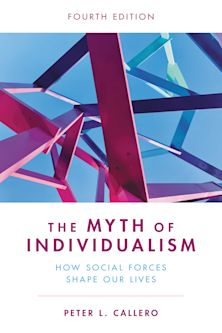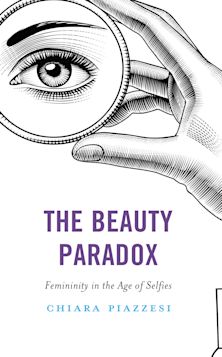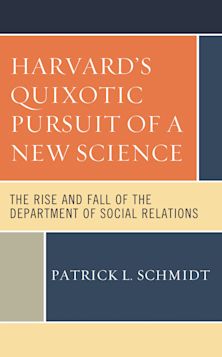- Home
- ACADEMIC
- Sociology
- Sociology - Other
- Screening the Nonhuman
Screening the Nonhuman
Representations of Animal Others in the Media
Amber E. George (Anthology Editor) , J.L. Schatz (Anthology Editor) , Joseph Anderton (Contributor) , Michael Atkinson (Contributor) , Fernando Pagnoni Berns (Contributor) , Christina Victoria Cedillo (Contributor) , Amber E. George (Contributor) , Stella Hockenhull (Contributor) , Anja Höing (Contributor) , am Husemann (Contributor) , Fiona Yuk-wa Law (Contributor) , Matthew Lerberg (Contributor) , César Marino (Contributor) , Guilherme Nothen (Contributor) , Sean Parson (Contributor) , Jennifer Polish (Contributor) , J.L. Schatz (Contributor) , Carter Soles (Contributor)
Screening the Nonhuman
Representations of Animal Others in the Media
Amber E. George (Anthology Editor) , J.L. Schatz (Anthology Editor) , Joseph Anderton (Contributor) , Michael Atkinson (Contributor) , Fernando Pagnoni Berns (Contributor) , Christina Victoria Cedillo (Contributor) , Amber E. George (Contributor) , Stella Hockenhull (Contributor) , Anja Höing (Contributor) , am Husemann (Contributor) , Fiona Yuk-wa Law (Contributor) , Matthew Lerberg (Contributor) , César Marino (Contributor) , Guilherme Nothen (Contributor) , Sean Parson (Contributor) , Jennifer Polish (Contributor) , J.L. Schatz (Contributor) , Carter Soles (Contributor)
You must sign in to add this item to your wishlist. Please sign in or create an account
Description
Screening the Nonhuman draws connections between how animals represented on screen translate into reality. In doing so, the book demonstrates that consuming media is not a neutral act but rather a political one. The images humans consume have real world consequences for how animals are treated as actors, as pets, and in nature. The contributors propose that altering the representations of animals can change the way humans relate to non/humans. Our hope is for humans to generate more ethical relationships with non/humans, ultimately mediating reality both in terms of fiction and non-fiction. To achieve this end, film, television, advertisements, and social media are analyzed through an intersectional lens. But the book doesn’t stop here. Each author creates counter-representational strategies that promise to unweave the assumptions that have led to the mistreatment of humans and non/humans alike.
Table of Contents
Part I
Chapter One: The Brown Wizard's Unexpected Politics: Speciesist Fiction and the Ethics of The Hobbit, J.L. Schatz
Chapter Two: The Passing Faerie and the Transforming Raven: Animalized Compulsory Re-covery, Endurance, and Dis/ability in Maleficent, Jennifer Polish
Chapter Three: Jabbering Jaws: Reimagining Representations of Sharks Post-Jaws, Matthew Lerberg
Chapter Four: Horseplay: Beastly Cinematic Performances in Steven Spielberg's War Horse, Stella Hockenhull
Chapter Five: Would Bugs Bunny Have Diabetes?: The Realistic Consequences of Cartoons for Non/Human Animals, Amber E. George
Part II
Chapter Six: I Am Legend (2007), U.S. Imperialism, and the Liminal Animality of “The Last Man, Carter Soles
Chapter Seven: Ape Anxiety: Intelligence, Human Supremacy, and Rise and Dawn of the Planet of the Apes, Sean Parson
Chapter Eight: The Vicious Cycle of Disnification and Audience De
Product details
| Published | 27 Apr 2016 |
|---|---|
| Format | Hardback |
| Edition | 1st |
| Extent | 238 |
| ISBN | 9781498513746 |
| Imprint | Lexington Books |
| Dimensions | 235 x 160 mm |
| Series | Critical Animal Studies and Theory |
| Publisher | Bloomsbury Publishing |
About the contributors
Reviews
-
Our fellow animals have had rough treatment on film—like many of our fellow humans. But they cannot organize and protest like we can. The book you have before you gives us tools and evidence to make the case on their behalf. Freedom from harm is a basic animal right, and that applies to issues of representation as well as physical treatment. Their cause must be our cause.
Toby Miller, author of Television Studies: The Basics
-
Finally, analyses of animal representations in popular culture from an explicitly Critical Animal Studies point of view. I enthusiastically recommend Screening the Nonhuman: Representations of Animal Others to those who want to enhance visual literacy while opening their minds to the revolutionary perspective of total liberation.
Ian Purdy, Executive Director, Institute for Critical Animal Studies
-
A wonderfully insightful, provocative, and much needed book that combines critical theory, media analysis, and cultural studies with the ethics and urgency of animal liberation politics. This crossover work builds bridges between activism, academia, and the general public, and will surely inspire discussion and debate about the role of nonhuman animals in both film and society.
Jason Del Gandio, author of "Rhetoric for Radicals: A Handbook for 21st Century Activists"

ONLINE RESOURCES
Bloomsbury Collections
This book is available on Bloomsbury Collections where your library has access.



































